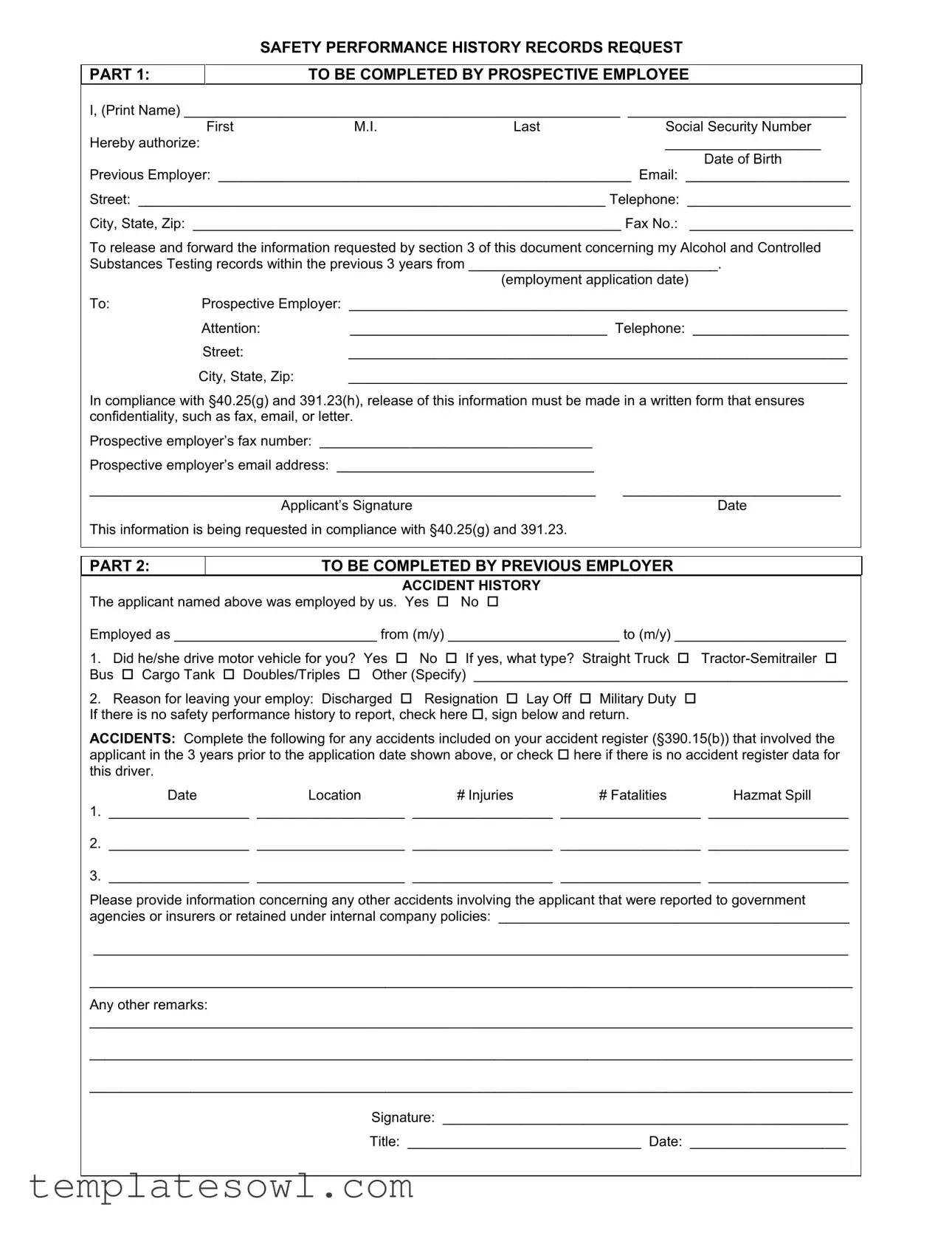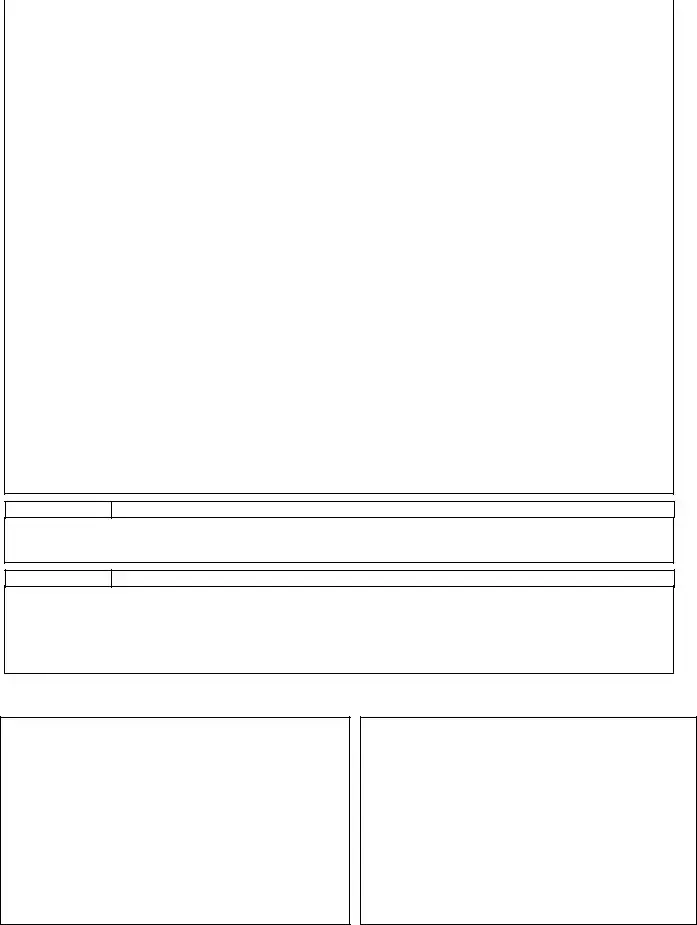What is the purpose of the History Records Request form?
The History Records Request form is designed to gather information about a driver's safety performance and drug and alcohol testing history from previous employers. This ensures compliance with Department of Transportation regulations and helps prospective employers make informed hiring decisions.
Who should complete Part 1 of the form?
Part 1 should be completed by the prospective employee, or the driver who is seeking employment. The driver must provide personal information, including their name, social security number, date of birth, and previous employer details. This section requires the driver's signature, authorizing the release of their safety performance records.
What information is included in Part 2 of the form?
Part 2 is intended for the previous employer to fill out. This section covers the applicant's accident history and employment details. Employers must indicate whether the applicant drove a motor vehicle, the reason for their departure, and provide details of any accidents within the past three years. If there are no accidents to report, this must be noted as well.
What types of accidents need to be reported by the previous employer?
Employers must report any accidents involving the applicant that occurred within the three years prior to the application date. They should include information about the date of the accident, location, number of injuries, fatalities, and if there was a hazardous materials spill. Employers should also provide details on other incidents reported to government agencies or insurers.
In Part 3, what information related to drug and alcohol history is the previous employer required to provide?
Part 3 requires the previous employer to disclose if the driver had any alcohol tests yielding a result of 0.04 or higher. It also asks whether the applicant tested positive for controlled substances, refused to submit to testing, or committed other violations related to drug and alcohol policies. This section helps ensure that the prospective employer is aware of any relevant history that could impact the driver's eligibility.
What is the significance of the 30-day timeline mentioned in the form?
The 30-day timeline indicates that the driver must arrange to receive or pick up the requested records within 30 days of them being made available by the prospective employer. If this does not happen, the driver waives their right to review those records. This encourages timely communication and ensures the process remains efficient.
What actions must a previous employer take after receiving a rebuttal from a driver?
If a driver wishes to dispute information in their records, they can submit a rebuttal. The previous employer must forward this rebuttal to the prospective motor carrier and append it to the driver's information in their records within five business days.
What should a driver do if they find erroneous information in their safety performance records?
If a driver identifies erroneous information, they should complete a correction request and submit it to the previous employer. The employer must either correct the information and forward it to the prospective employer or notify the driver if they do not agree to the correction.
What is the time frame for a prospective employer to provide information to the driver?
A prospective employer must provide the requested safety performance history to the driver within five business days of receiving the written request. If they are still waiting on records from previous employers, this five-day countdown begins once they receive the required information.





